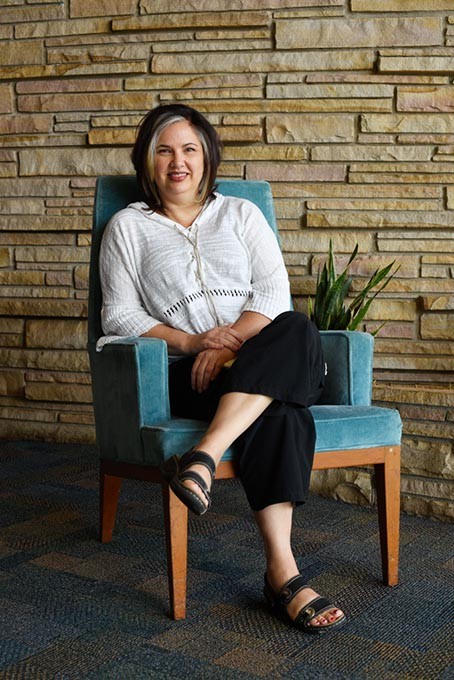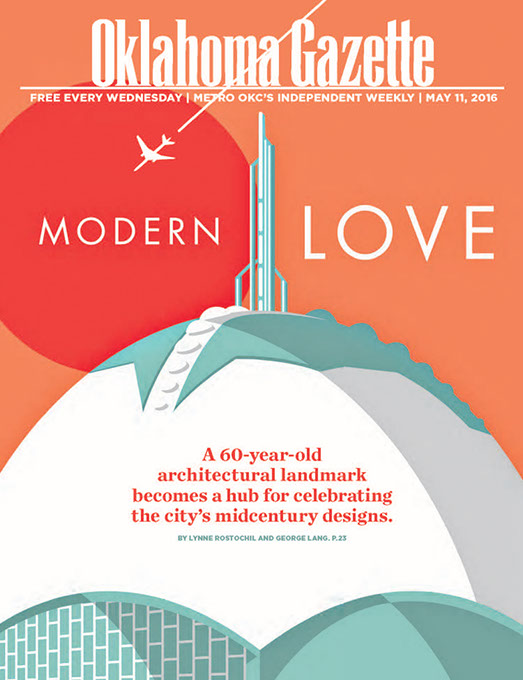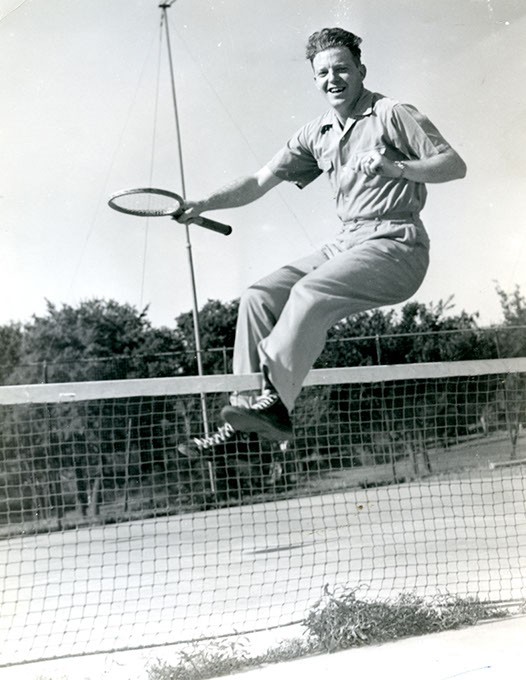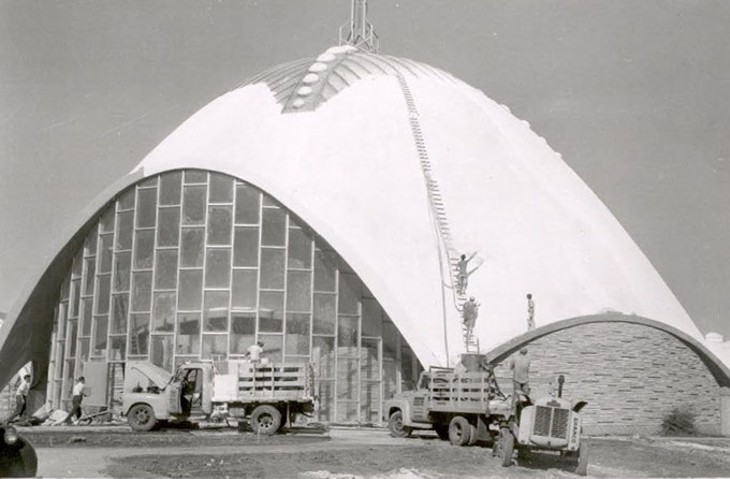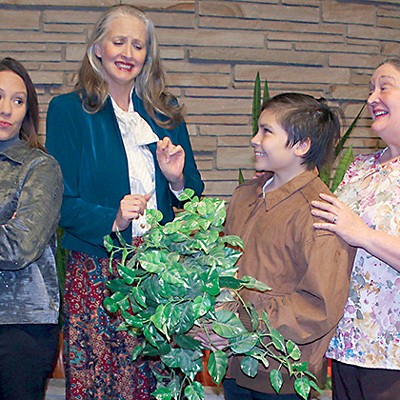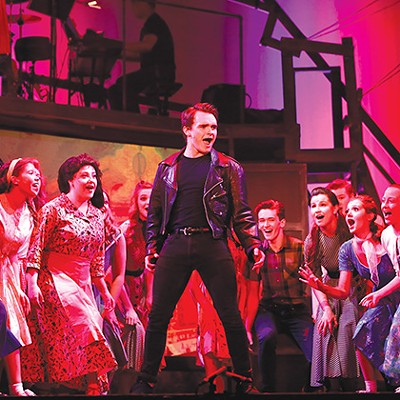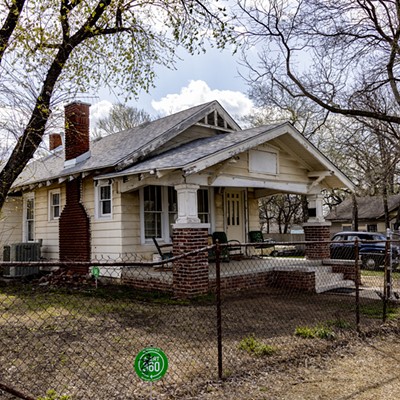Any newcomer to Oklahoma City would surely take one look at First Christian Church at NW 36th Street and Walker Avenue and automatically assume that the uber-modern structure is a very daring but recent creation and would certainly be surprised to hear that this beloved dome has been part of our architectural landscape for a whopping six decades.
The gleaming white egg, or boob or bulb — or whatever your favorite nickname for the iconic building is — still looks as innovative and fresh as the day a very determined Rev. Bill Alexander declared that he would build a true “church of tomorrow” right here in Oklahoma City.
And when the reverend set his sights on a dream, he always managed to bulldoze his way through doubt, criticism and excuses to make it happen.
Fearless rebirth
To say that Alexander was quite a character is a vast understatement. The son of a St. Louis pastor, Alexander grew up in the church but like most kids who want to make their own mark in life do, he cringed at the thought of following in his father’s footsteps. Instead, the 6-foot, 5-inch tall, 200-pound youngster with an easy laugh and blazing red, curly hair (which was about as easy to control as his desire for adventure) left home to pursue a career in show business as a vaudeville emcee, musician or just about anything that didn’t involve religion.
Somewhere along the way, though, he came to the realization that church didn’t have to be stuffy and boring as he once thought; it could be filled with fun, energy, life — and even dancing! — if approached in a new way.
The prodigal son returned to the family fold and enrolled in college to become a pastor, but one in a new vein.
While still a University of Tulsa student in 1935, Alexander volunteered to take over the helm and try out his then-revolutionary ideas as a student pastor at the faltering First Christian Church in Stroud, which was down to a meager 34 members when he arrived.
Never one to sit around to wait for things to happen, the gregarious and fearless young minister went from door to door in the tiny town along Route 66, introduced himself and invited the community to church on Sunday. Most said no. One neighbor even declared that his new church was dead. Alexander seized on that and spread the word that the little Stroud church was, indeed, dead. In fact, he would perform burial services for it on Sunday.
Well, of course, curious rubberneckers from all over the county came out to witness the spectacle. At the pulpit sat a somber, solitary closed coffin. As legend has it, the minister, always a showman at heart, slowly creaked open the lid and encouraged the crowd to pay its respects. One by one, guests moved to the front of the church and peered into the coffin to see their own reflections in a mirror Alexander placed inside.
Whether due to shock, guilt or even a sense of humor, the trick worked. Pews quickly filled, so much so that the church boasted 600 members by the time Alexander left a few years later.

After taking time off for more studying and then heading a Los Angeles church for a year, he found himself back in Oklahoma in 1942 as the new pastor of First Christian Church in Oklahoma City.
Alexander had the charm of George Clooney, the sense of fun of Walt Disney and the gusto of Ernest Hemingway, so it’s perhaps no surprise that the spirited new minister swept into town like a thunderstorm on a balmy spring afternoon. He quickly endeared himself to all.
The congregation, which was located in an imposing neo-classical and gold-domed relic at NW 10th Street and Hudson Avenue, was progressive but a bit like the aging structure it called home — a little tired and dusty. Alexander changed that when he preached that the church should be about more than glum Sunday services and a meeting place for wilted ladies clubs; it should be a haven for the young, with a plethora of activities to keep them busy and out of trouble.
To this end and much to the dismay of other, much more conservative, places of worship down the street, he convinced church leaders to host dances, parties and plays at the church and construct a bowling alley in the basement. Soon, First Christian swarmed with teenagers and youngsters eager to join the church, have fun and learn a bit about God.
Decades later, one of Alexander’s “kids,” Susan Hart, still marvels at his ability to make each of them feel special.
“He knew every child by name, and we all called him Bill because he was more of a friend to us than a leader,” Hart said. “If you ever had a problem and needed someone to talk to, his office door was always open and he was there, eager to listen. That kind of adult/child relationship was very uncommon back in the ’50s.”
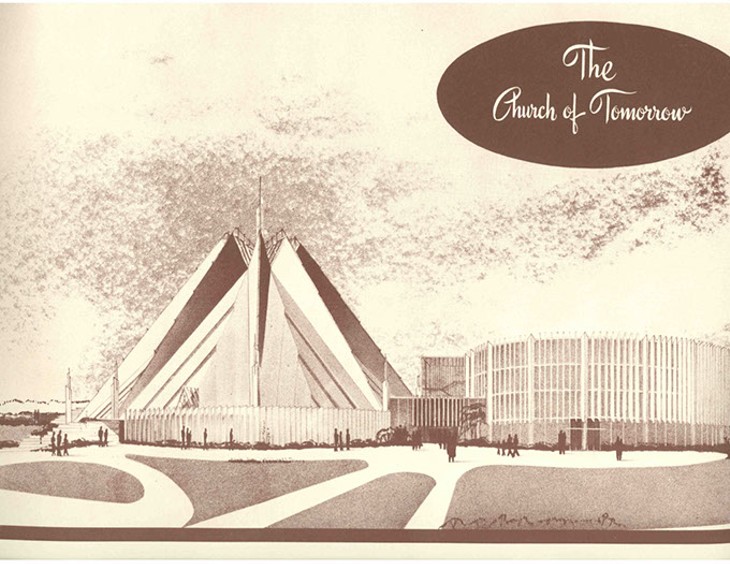
Designing the future
Alexander’s great success entered a new realm at the end of World War II, when he decided that it was time to create a building that would match the lively and spirited church he had created. He dubbed his vision The Church of Tomorrow and deemed it would be a thoroughly modern and inclusive place where all could gather to worship and play.
He just had to find the land and someone with a similar vision to make his dream come true.
Enter Oklahoma natives R. Duane Conner and Fred Pojezny, who met as engineering students at Oklahoma A&M (now Oklahoma State University) before there was ever an architecture department at the university. Both men had served during WWII — Pojezny as an active duty Navy man and Conner as an engineer on the Manhattan Project in Oak Ridge, Tennessee. Upon their return to Oklahoma City after the war, the two 20-somethings found themselves toiling away as draftsmen at architectural firm Coston & Frankfurt, but neither was happy working for others, so they decided to form their own partnership, Conner & Pojezny Designs, in 1946.
Soon after, the two met Alexander to discuss the minister’s ideas for his revolutionary Church of Tomorrow. The congregation had purchased land that was once home to Edgemere Country Club, which had recently closed.
With 40 acres to play with, Alexander, Conner as principal architect and Pojezny had the latitude to bring the reverend’s dream campus to life.
It would be one of the largest in the country, complete with a modern sanctuary, an education building, a theater, a youth center, picnic and camping grounds, baseball fields, tennis courts and, as the first completed project in 1947, a 3,500-seat amphitheater where patrons could enjoy services and events under the stars.
The architects quickly surveyed the land and came up with preliminary drawings for a youth center in the Miesian style while Alexander focused on stretching his reach as a minister.
His nationwide recognition grew due to a flattering appearance in Look magazine and a schedule that he packed with speaking engagements to civic organizations throughout the United States.
His positive message of living a joyful life through God appealed to so many postwar Americans that Alexander was tapped to run on the Republican ticket for the U.S. Senate in 1950.
Although it might be difficult to believe in an age when Oklahoma is the reddest state in the Union, from statehood until the late 1960s, the Sooner State was a Democratic stronghold, so it was no surprise when Alexander lost the election to his opponent, Mike Monroney. However, the defeat didn’t hamper the reverend’s popularity; just two years later, he became the national chaplain for the Republican Party during Dwight D. Eisenhower’s first run for office. His congregation also swelled to more than 3,800 members.
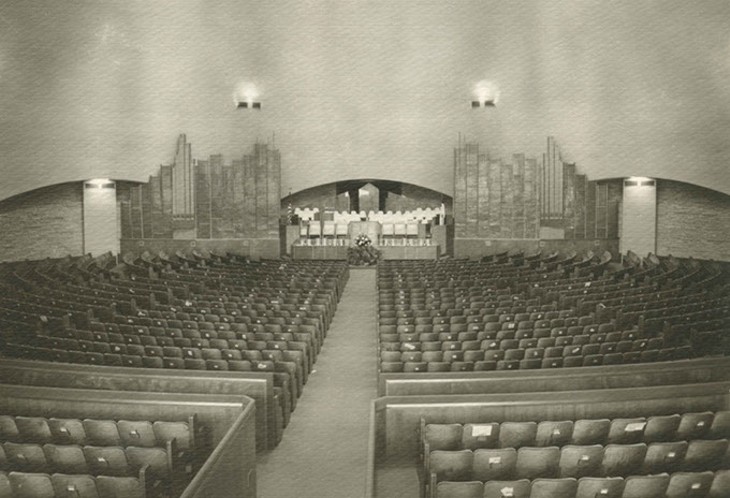
Youthful invention
By 1953, Conner had abandoned his original boxy ideas for the church and replaced them with a much more ambitious and striking design that featured a three-building campus with a rounded theater and educational buildings offset by a crystal-like glass sanctuary that looked like something out of Logan’s Run. (Due to the church’s limited finances, the youth center that Alexander longed for would have to wait awhile longer.)
The congregation was so enamored with the new design that a promotional booklet was published featuring Conner’s brainchild. Unfortunately, when building estimates came back for the new complex, they far exceeded the church’s modest $1.1 million budget, so Conner went back to the drawing board.
The young architect had worked on a couple of small projects that employed thin-shell roof designs and thought that this might be a perfect opportunity to use the innovative method on a much grander scale. Thin-shell concrete was durable, lightweight and could be molded into nearly any shape, which allowed architects to design buildings without the interior supports that had always been necessary and open up spaces like never before — and for a fraction of the cost of more conventional construction methods.
Conner returned to the congregation with a completely new sanctuary design that abolished the crystal in favor of a dramatic concrete dome with minimal interior supports. Once again, church members approved of his ideas. As construction began in 1956, word quickly spread about the revolutionary dome design. Many naysayers, including engineers and architects, warned the entire structure would collapse under its own weight without some kind of internal support. Despite the controversy, Conner remained confident in his design. He assured everyone that the building would be sound if construction of the dome was completed later that year and engineers quickly put the new dome to the test. Alexander, parishioners and maybe even Conner himself breathed a collective sigh of relief when testing proved that his design could easily handle the dome’s weight distribution.
With the controversy over, it was time to prepare First Christian Church for its grand opening just in time for Christmas services.
On its Dec. 23, 1956 opening day, nearly 3,000 people filled the comfortable theater-style seats, crammed into sanctuary aisles and packed the dining room to listen to Alexander’s inaugural sermon over the PA system and catch a tour of the modern complex afterward.
The Church of Tomorrow was finally a reality. Conner’s futuristic design quickly became a beloved icon throughout the state and was lauded in national publications such as Life, Newsweek and Architectural Record.
Sadly, Alexander didn’t live long enough to see the rest of his dream for the Church of Tomorrow — the youth center — come true. He and wife Mary Louise were flying to an April 3, 1960 speaking engagement in Hershey, Pennsylvania, when the twin-engine plane in which they were flying crashed into a suburban parking lot while landing, killing the couple and the pilot.
Alexander was just 45 years old.
In one last gesture of his love for the youth of the church, Alexander’s life insurance payout went straight to the fund for the William H. “Bill” Alexander Memorial Youth Center.
The Fred Pojezny-designed building was completed and dedicated the following year.
Pojezny also went on to design the final building on First Christian Church’s campus, the Oklahoma Disciples Center, in 1964 and updated spaces in the original three buildings over the next 30 years.
For decades, First Christian Church remained a vital part of the community, sponsoring events such as one of the city’s first Mother’s Day Out programs; hosting countless productions at Jewel Box Theatre; and opening its doors to families, survivors and other mourners after the 1995 Oklahoma City bombing of the Alfred P. Murrah Federal Building.
By 2013, however, the aging, increasingly diminishing and even cantankerous congregation was waning.
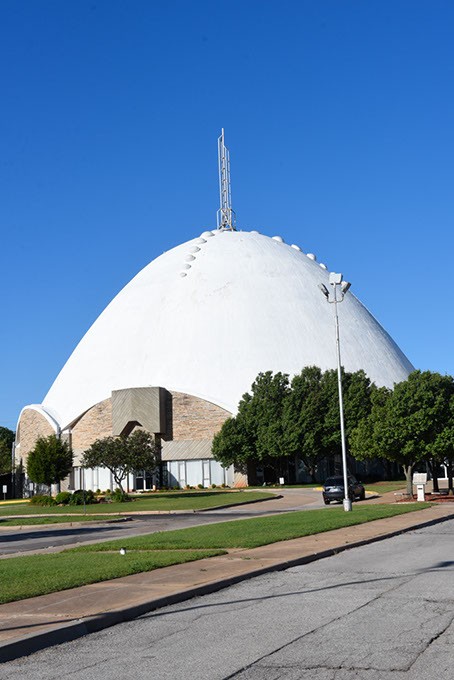
Restoring tomorrow
That was when reverends John Malget and Michael Canada took over the reins and vowed to revitalize the church in a way that Bill Alexander would surely approve of.
Last year, the energetic co-pastors enthusiastically transformed from a Disciples of Christ congregation into Restoration Church and are working, much as Alexander did back in that small, failing church in Stroud, to entice young and old alike to join in Sunday fun and continue building the Church of Tomorrow.
Editor’s note: Lynne Rostochil is the granddaughter of First Christian Church architect R. Duane Conner and co-founder of Okie Mod Squad.
